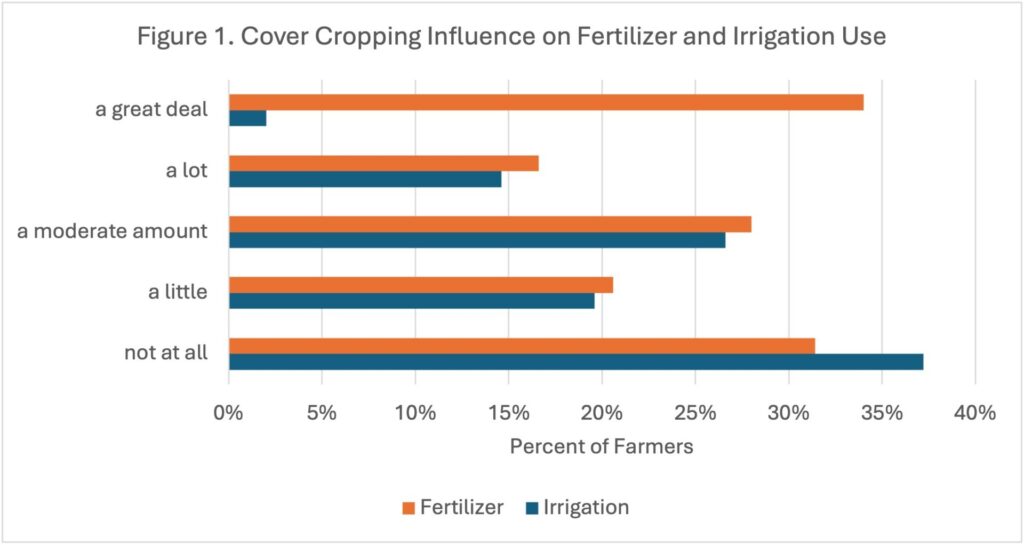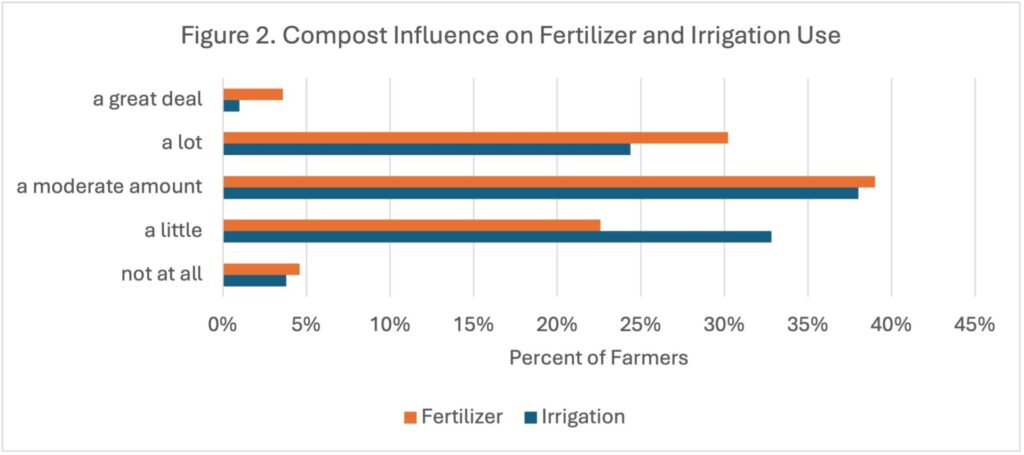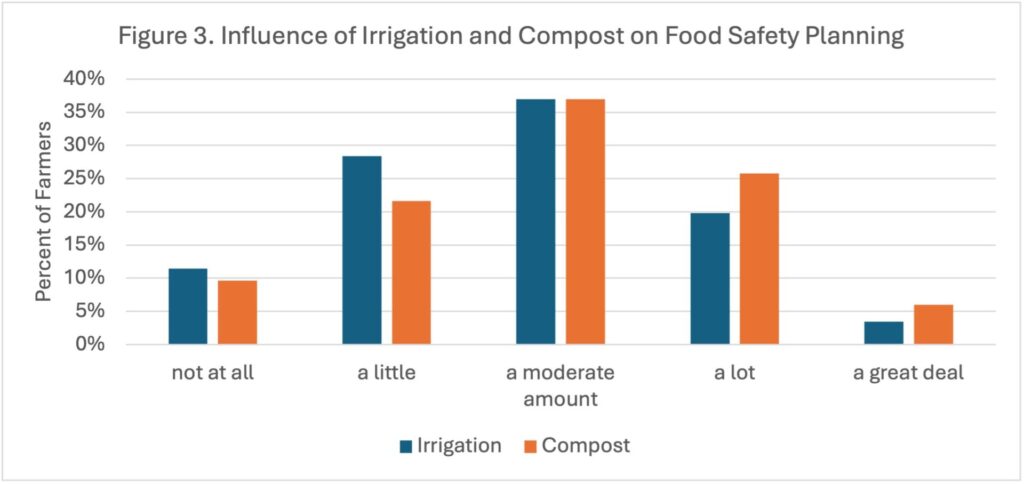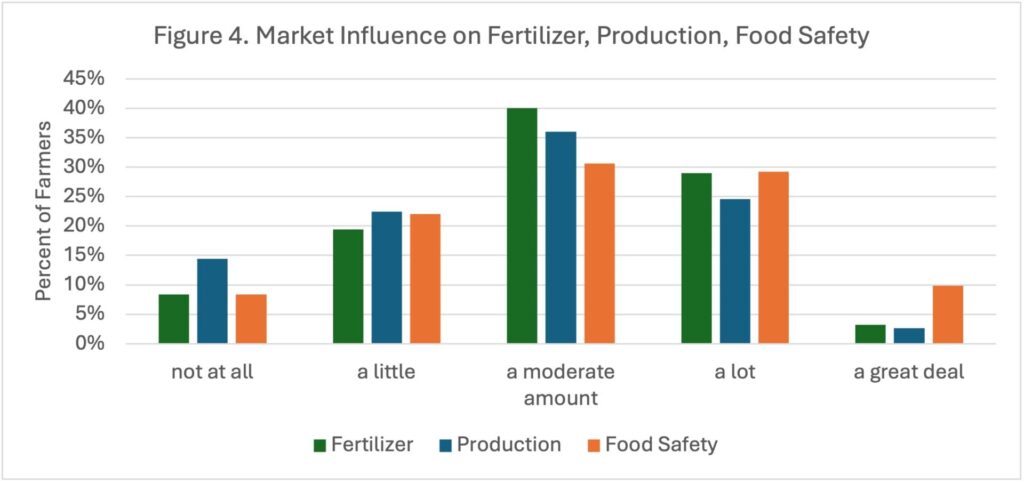Small and medium-sized vegetable farms face unique challenges balancing profitability with sustainable production practices and food safety requirements. To better understand how these farmers navigate complex decision-making processes, the Soil to Market Team—comprising Maria Marshall, Renee Wiatt, Petrus Langenhoven, Betty Feng, and Nathan Shoaf—conducted a comprehensive survey of 500 small and medium-sized farmers across the United States during 2024-2025. This research, funded by the U.S. Department of Agriculture’s National Institute of Food and Agriculture, focuses on holistic farmer decision-making processes.
This article series presents key findings from the survey, offering insights that can help both growers and Extension educators better understand the interconnected nature of farm planning. These findings aim to support more profitable and sustainable vegetable farming operations by examining the relationship between strategic planning and farm performance.
The Connected Farm: How Growers Integrate Practices from Soil to Market
It is important for farmers to have thought about their production and marketing plans before the season begins. In fact, our survey results show that 99% of farmers had a seasonal production plan, 78% had a seasonal marketing plan, and 68% had an updated business plan. However, production and marketing are not mutually exclusive strategies on a farm and should be integrated. In other words, your market may determine what you produce and what and how you farm may determine your market.
We asked farmers to what extent their seasonal production and marketing plans were integrated. The majority stated a moderate amount to a great deal, with only 8% stating a little to not at all. We also asked farmers to what extent (1= not at all and 5= a great deal) various production and marketing practices affect different steps in the soil to market process. The results shed light on how farm management decisions create ripple effects throughout production systems, revealing that successful vegetable operations require integrated thinking that connects soil health practices to market demands.
Cover Crops and Resource Management
Figure 1 shows that cover cropping significantly influences both irrigation and fertilizer management on most farms. Nearly two-thirds of growers (63%) report that cover crops affect their irrigation practices to some degree, with 43% indicating a moderate to significant impact. This influence likely reflects cover crops’ ability to improve soil water retention and reduce irrigation needs. Cover crops offer substantial benefits for water management by creating deeper water penetration pathways, minimizing surface water loss, and enhancing the soil’s structural capacity to store moisture effectively. The water conservation advantages must be balanced against the crops’ own water consumption, with the overall irrigation impact varying based on environmental conditions, species selection, and harvest timing decisions. Successful implementation requires farmers to match cover crop varieties and management strategies to their specific regional weather patterns, soil characteristics, and precipitation levels to optimize water conservation outcomes.
The relationship between cover crops and fertilizer use is even more pronounced, with 68.6% of growers reporting a little to a great of influence. This connection demonstrates how soil-building practices translate directly into input cost savings. However, roughly one-third of farmers stated cover cropping had no effect on their use of irrigation (37%) or fertilizer (31%).
Compost as a System Driver
Compost emerges as an influential practice, as shown in Figure 2, affecting multiple aspects of farm operations. An impressive 96% of growers report that compost use influences their irrigation decisions to some extent, with 64% experiencing moderate to major effects. This strong relationship reflects compost’s role in improving soil structure, water-holding capacity, and overall soil health. Compost significantly reduces irrigation needs by improving soil structure and water retention, allowing soil to act like a sponge that absorbs and holds moisture more effectively. The organic matter in compost enhances water infiltration while reducing surface runoff, meaning plants have access to water for longer periods and require less frequent watering. Additionally, compost enriches soil with nutrients that promote healthier plant growth and more efficient water uptake, further minimizing the need for supplemental irrigation.
The fertilizer connection is equally strong, with 96% of growers noting some influence of compost on fertilizer use. More than one-third (34%) report major effects, highlighting the value of compost as both a nutrient source and a foundation for reducing synthetic inputs.
Food Safety as an Integrating Factor
Food safety planning serves as another potential integration point, influenced by multiple production decisions (Figure 3). The source of compost affects food safety planning for 90% of growers, reflecting heightened awareness of pathogen risks and regulatory requirements around organic amendments.
Irrigation systems also significantly influence food safety planning, with 89% of growers reporting some connection. This relationship has grown increasingly important as water quality and application methods become central to food safety protocols.
Market Forces Shape Production Decisions
The survey reveals that market considerations influence production practices, creating a clear soil-to-market connection (Figure 4). Nearly three-quarters of growers (72%) report that their intended market affects fertilizer use, with 32% stating that it affected their use a lot to a great deal. This suggests that premium markets may drive increased investment in the use of specific soil fertility amendments to meet quality expectations.
Market influence extends beyond soil fertility management. Over 69% of growers indicate that market considerations affect their food safety planning, with 39% reporting moderate to significant effects. This connection reflects the reality that different markets have varying food safety requirements, from direct sales to large retail chains.
The market-production system relationship is even stronger, with 86% of growers reporting some market influence on their overall production approach. Only 14% stated that their market did not affect their production system. This comprehensive influence demonstrates how market demands shape everything from variety selection to harvest timing.
Implications for Growers
These findings underscore several key principles for successful vegetable production:
- The interconnected nature of farm decisions means that changes in one area create opportunities or challenges in others. Growers who consider these connections can maximize synergies and avoid unintended consequences.
- Both cover cropping and composting influence irrigation efficiency and fertilizer needs, suggesting that investments in soil health can reduce other input costs while supporting production goals.
- The strong influence of market considerations on production practices highlights the importance of understanding customer requirements and building production systems that can meet diverse market demands.
- Rather than managing irrigation, fertility, and food safety as separate concerns, successful growers coordinate these practices to achieve multiple objectives simultaneously.
As vegetable production faces increasing pressure to balance productivity, profitability, and sustainability, the integration of practices from soil to market becomes increasingly critical. The survey data suggests that the most successful operations will be those that view their farms as interconnected systems where soil health investments support both production efficiency and market success.
For growers looking to optimize their operations, the data points toward focusing on practices with multiple benefits: cover crops that reduce both irrigation and fertilizer needs, compost systems that improve soil health while meeting food safety requirements, and production approaches that align soil management with market opportunities. Farmers should think beyond individual practices to consider how each management decision supports or constrains others, creating systems that are both resilient and responsive to market demands.
Reference
Wiatt, R., Marshall, M.I., Feng, Y., Langenhoven, P., and Shoaf, N. (2024-2025). Soil to Market Producer Survey on Integrated Decision-Making Survey [data file and codebook]. IRB-2024-1552. Funded by USDA-NIFA-AFRI: Taking the Next Step as a Small and Medium Sized Farm: Understanding the Integration of Production, Food Safety, and Profitability.
Funding Acknowledgement
This work is supported by the Agriculture Food Research Initiative-Small and Medium Sized Farms Program, project award no. 2021-68006-33893, from the U.S. Department of Agriculture’s National Institute of Food and Agriculture.
Any opinions, findings, conclusions, or recommendations expressed in this publication are those of the author(s) and should not be construed to represent any official USDA or U.S. Government determination or policy.




